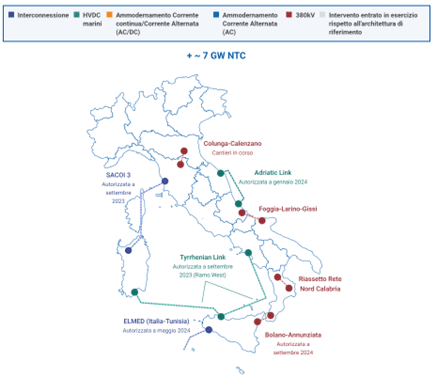The evolution of the national electricity grid envisaged by Terna's 2025-2034 Development Plan continues with renewed impetus. The objective is a grid capable of supporting the increase in connection requests while guaranteeing the system’s efficiency, safety and resilience, accelerating the energy transition, and increasing transport capacity and the country’s interconnections with Europe and the Mediterranean countries.
The plan is already a reality and was presented in Rome by the national transmission grid operator’s CEO and General Manager Giuseppina Di Foggia in the presence of the Minister for the Environment and Energy Security Gilberto Pichetto Fratin, the Italian Regulatory Authority for Energy, Networks and Environment’s (Arera) Chairman Stefano Besseghini and Terna’s Chairman Igor De Biasio.
